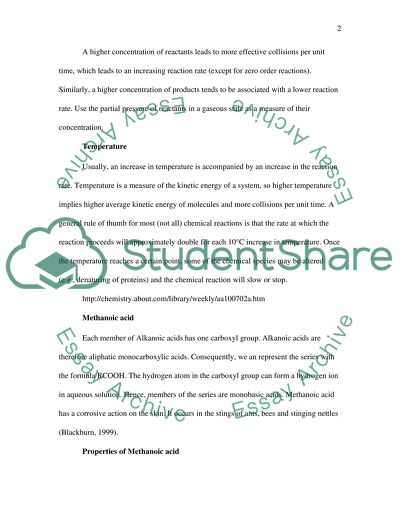Effect of Concentration and Temperature on the Rate of Reaction Essay. Retrieved from https://studentshare.org/miscellaneous/1527173-effect-of-concentration-and-temperature-on-the-rate-of-reaction
Effect of Concentration and Temperature on the Rate of Reaction Essay. https://studentshare.org/miscellaneous/1527173-effect-of-concentration-and-temperature-on-the-rate-of-reaction.


